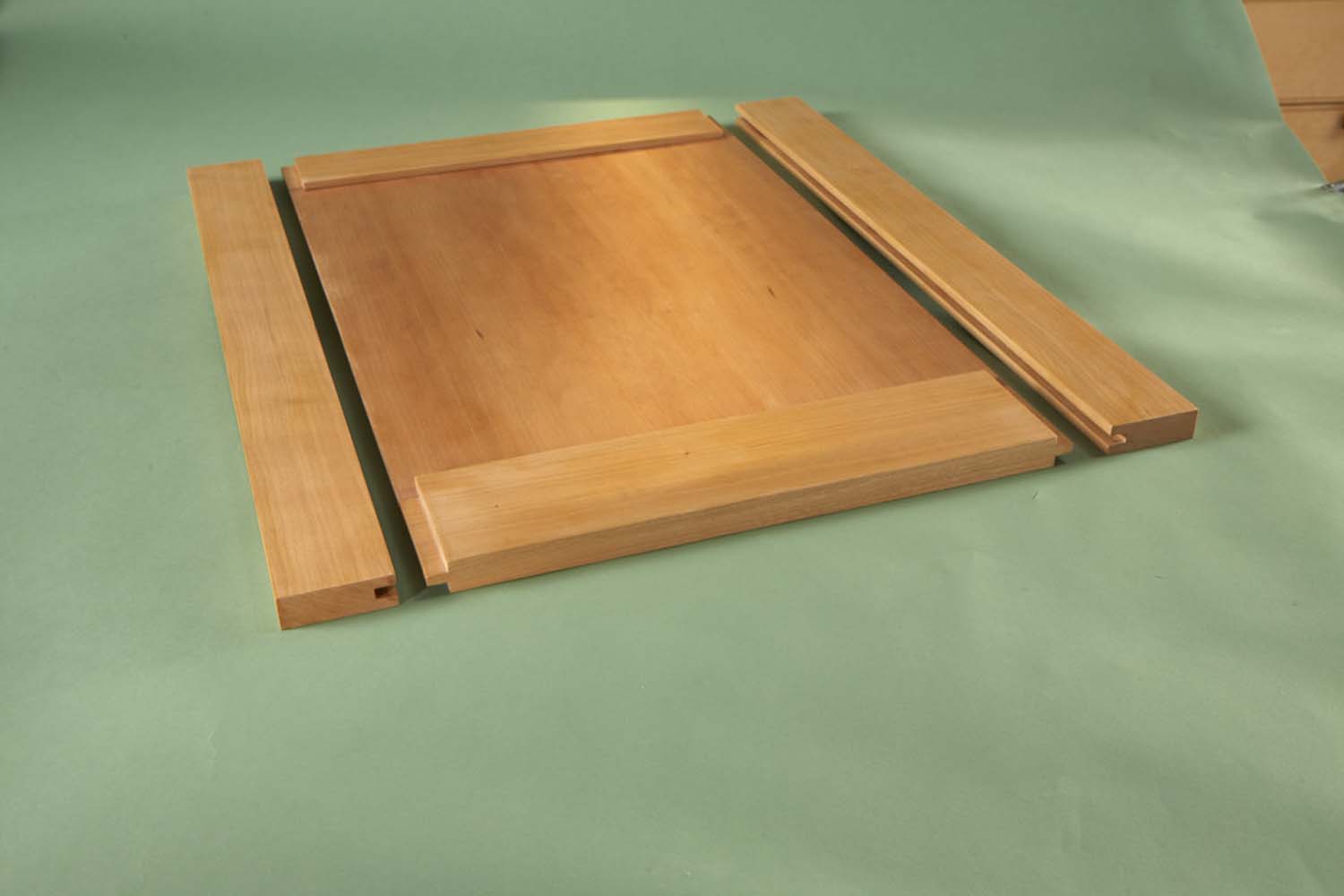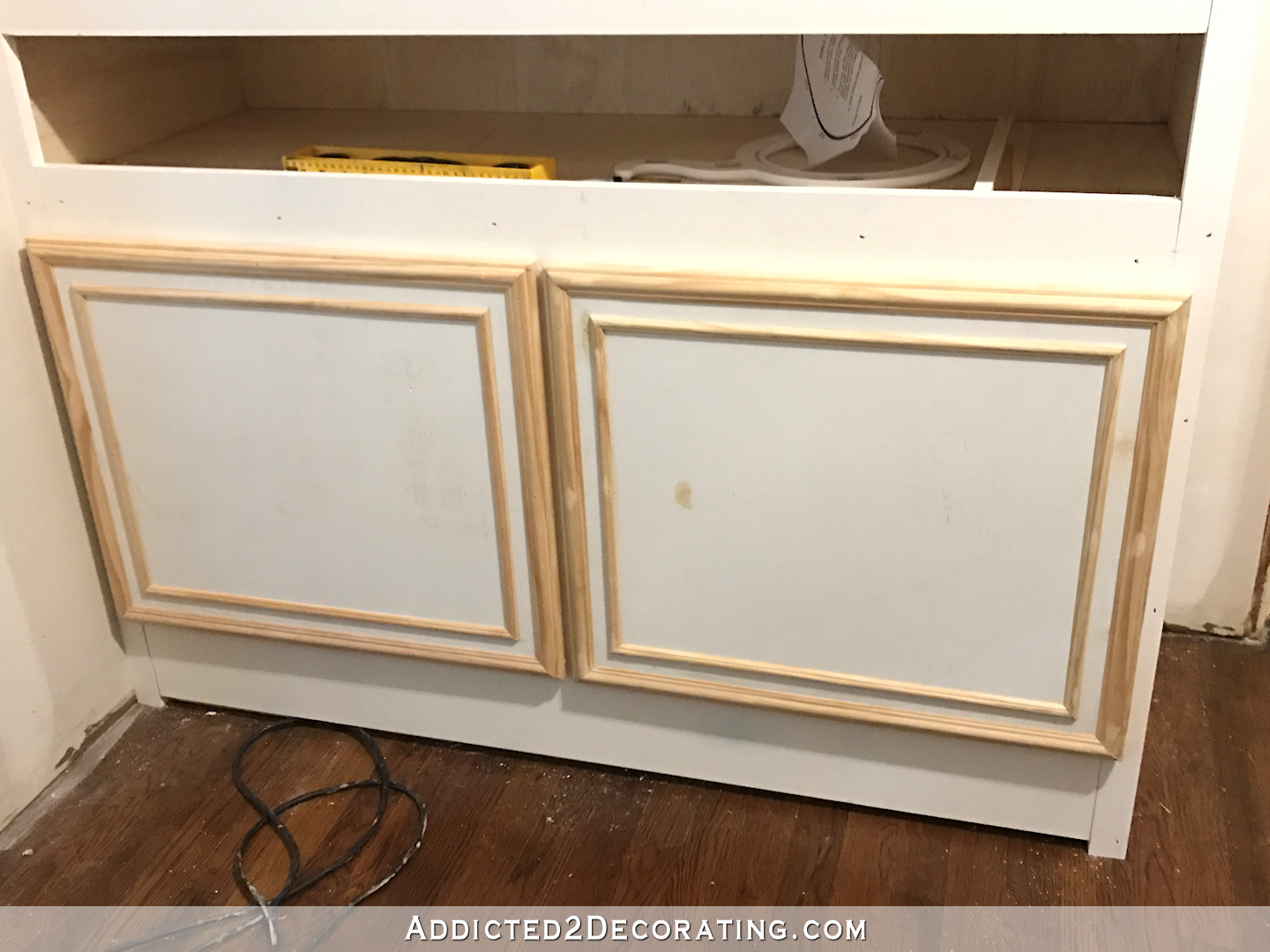Repurposing Materials for Inexpensive Cabinet Doors

Making your own cabinet doors can be a surprisingly affordable project, especially if you’re willing to get creative with your materials. This section explores readily available and inexpensive options for building durable and stylish cabinet doors, focusing on repurposing and upcycling. We’ll look at material choices, design ideas, and finishing techniques to help you transform your kitchen or bathroom cabinets without breaking the bank.
Suitable Materials for Cabinet Door Construction
Choosing the right material is key to creating strong and attractive cabinet doors. Several options offer a good balance of affordability and durability.
How to make inexpensive cabinet doors – Here’s a comparison of some popular choices:
- Reclaimed Wood: Offers unique character and a rustic charm. Pros: Sustainable, visually appealing, often inexpensive if sourced correctly (e.g., from demolition sites or salvage yards). Cons: Can be warped or damaged, requiring extra work for preparation and may contain imperfections. Expect to spend time on cleaning and planing.
- Plywood: A readily available and affordable option. Pros: Strong, stable, relatively easy to work with, comes in various thicknesses and finishes. Cons: Can lack the visual appeal of reclaimed wood or solid wood, edges may require additional finishing.
- MDF (Medium-Density Fiberboard): A very affordable and smooth option, ideal for painting. Pros: Smooth surface, easy to paint or finish, readily available. Cons: Not as durable as wood, susceptible to moisture damage, can be difficult to screw into without pre-drilling.
Reclaimed Wood Cabinet Door Designs
Using reclaimed wood allows for a unique, personalized touch. Here are three design ideas:
Remember to always wear safety glasses and appropriate protective gear when working with wood.
| Material | Cut Dimensions (Example – Adjust to your needs) | Assembly Steps | Cost Estimate |
|---|---|---|---|
| Reclaimed Pine Boards (1 inch thick) | Door Frame: 2 pieces (24″ x 12″), 2 pieces (10″ x 12″) Panel: 1 piece (10″ x 10″) |
1. Cut all pieces to size. 2. Assemble frame using wood glue and screws. 3. Fit panel into frame. 4. Sand and finish. | $15 – $30 (depending on wood source) |
| Reclaimed Pallet Wood (various widths) | Multiple slats of varying widths to create a rustic look. Total dimensions: 24″ x 12″ | 1. Cut slats to desired length. 2. Arrange slats in desired pattern. 3. Glue and clamp slats together. 4. Sand and finish. | $10 – $20 (depending on pallet wood source) |
| Reclaimed Barn Wood (thick planks) | Single plank: 24″ x 12″ | 1. Cut plank to size. 2. Sand and plane to desired smoothness. 3. Apply finish. (Consider adding simple hinges directly to the plank for a minimalist look.) | $25 – $50 (depending on wood source and condition) |
Refinishing Existing Cabinet Doors
Giving your existing doors a fresh look is a cost-effective alternative to replacing them entirely. A simple coat of paint can dramatically change their appearance.
Here are some techniques to achieve a modern or updated look:
Painting: A fresh coat of paint is a quick and inexpensive way to update your cabinets. Consider using a primer first, especially on darker woods or if you’re switching to a drastically different color. For a smooth finish, use a high-quality paint and apply multiple thin coats. A two-tone effect can be achieved by painting the frame one color and the panel another, or by adding a contrasting stripe.
Adding Hardware: New knobs and pulls can instantly modernize the look of your cabinets. Choose styles that complement your overall kitchen or bathroom design. Consider brushed nickel, matte black, or polished brass for a contemporary feel.
Distressing: For a rustic or vintage look, consider distressing your cabinet doors. This involves techniques like sanding to reveal underlying layers of wood or applying a crackle glaze to create an aged appearance. Use sandpaper with varying grits to achieve different levels of distressing. For a crackle effect, apply a base coat of paint, let it dry, then apply a crackle medium followed by a top coat of a contrasting color. As the top coat dries, it will crack, revealing the base coat beneath.
Budget-Friendly Cabinet Door Construction Methods: How To Make Inexpensive Cabinet Doors

Building your own cabinet doors can significantly reduce the cost of a kitchen remodel or furniture project. This section explores three common methods, comparing their material costs and ease of construction to help you choose the best approach for your skill level and budget. We’ll delve into the specifics of building shaker-style and frame-and-panel doors using readily available and inexpensive materials.
Comparison of Cabinet Door Construction Methods, How to make inexpensive cabinet doors
Three popular methods for constructing inexpensive cabinet doors are slab doors, frame-and-panel doors, and shaker-style doors. Each offers a different balance of cost, complexity, and aesthetic appeal.
| Method | Material Cost | Ease of Construction | Aesthetic |
|---|---|---|---|
| Slab Door | Lowest – typically requires only a single sheet of material. | Easiest – minimal cuts and joinery required. | Simple, modern. |
| Frame and Panel | Moderate – requires wood for the frame and panel, plus possibly molding. | Moderate – requires accurate cutting and joinery, but less complex than shaker style. | Classic, versatile. |
| Shaker Style | Moderate to High – requires more precise cuts and potentially more materials for the frame and raised panel. | More Difficult – requires precise joinery and potentially more advanced tools. | Clean, timeless. |
Building Shaker-Style Cabinet Doors
Shaker-style doors are known for their simple elegance and clean lines. Building them requires some woodworking skills, but the results are well worth the effort. Here’s a step-by-step guide:
Before you begin, gather your materials: plywood (for the frame and panel), wood glue, clamps, wood screws, sandpaper, paint or stain, and finishing supplies. Necessary tools include a saw (circular saw or jigsaw), a drill, a router (optional, for a more refined look), measuring tape, and a square.
- Cut the Frame Pieces: Measure and cut the four pieces of plywood that will form the frame of your door. Ensure accurate measurements for a perfectly square frame. A slight chamfer on the edges of the frame pieces can enhance the appearance.
- Cut the Panel: Cut the center panel slightly smaller than the inside dimensions of the frame to allow for a snug fit.
- Assemble the Frame: Apply wood glue to the joints of the frame pieces and clamp them together, ensuring squareness. Once the glue is dry, reinforce the joints with wood screws.
- Install the Panel: Apply wood glue to the edges of the panel and carefully place it into the frame. Clamp the panel in place until the glue dries. You can use small brads or finishing nails for added security, countersinking them and filling the holes with wood filler.
- Sand and Finish: Sand all surfaces smooth, paying attention to the joints. Apply paint or stain according to your preference and allow it to dry completely.
Building a Frame and Panel Cabinet Door
Frame and panel doors offer a classic look and are relatively easy to construct. This method uses inexpensive plywood for the panel and readily available molding for the frame.
Gather your materials: plywood for the panel, inexpensive molding for the frame, wood glue, wood screws, wood filler, sandpaper, paint or stain, and finishing supplies. Tools needed include a miter saw (or hand saw), a drill, clamps, and measuring tools.
- Cut the Panel: Cut the plywood to the desired size of your cabinet door. This will be the central panel of the door.
- Cut the Molding: Measure and cut the molding to create the frame. Use a miter saw for precise 45-degree angles at the corners. Ensure accurate measurements to create a perfectly square frame.
- Assemble the Frame: Use wood glue and small brads or finishing nails to assemble the frame. Clamp the frame until the glue is dry.
- Attach the Panel: Apply wood glue to the back of the frame and carefully position the plywood panel within the frame. Use clamps to secure the panel until the glue is dry. You may need to add additional support using small brads or screws if the panel is large or heavy.
- Fill Gaps and Sand: Fill any gaps between the molding and panel with wood filler, allowing it to dry completely before sanding smooth.
- Finish: Sand all surfaces smooth and apply paint or stain according to your preference.
Painting and Finishing Inexpensive Cabinet Doors

Giving your inexpensive cabinet doors a professional look doesn’t require a professional’s budget. With careful planning and the right techniques, you can achieve a stunning finish that will transform your kitchen or bathroom. This section focuses on cost-effective painting and finishing methods to maximize your results.
Paint and Primer Selection
Choosing the right paint and primer is crucial for a durable and attractive finish. A good quality primer will ensure even paint coverage, especially important on inexpensive materials that may have imperfections. Opt for a primer specifically designed for cabinets or woodwork; these primers often contain stain-blocking agents to prevent bleed-through from the underlying wood. For the paint itself, consider water-based paints (latex) as they are generally easier to clean up and offer good durability. Oil-based paints offer superior durability but require mineral spirits for cleanup.
Comparison of Paint Finishes
The type of paint finish significantly impacts the final look and durability of your cabinet doors. Here’s a comparison of three common finishes:
| Finish Type | Durability | Appearance | Maintenance |
|---|---|---|---|
| Matte | Moderate; more prone to scratches and scuffs than other finishes. | Subtle, hides imperfections well. | Requires more frequent cleaning; avoid harsh abrasives. |
| Semi-Gloss | Good; more resistant to scratches and moisture than matte. | Slight sheen; offers a balance between durability and appearance. | Relatively easy to clean; withstands regular wiping. |
| High-Gloss | Excellent; very resistant to scratches and moisture. | High sheen; reflects light, showcasing the door’s details. | Easy to clean; but imperfections are more visible. |
Applying Paint and Sealant
Proper application is key to a professional-looking finish. Start by thoroughly cleaning the cabinet doors to remove any dirt, grease, or old finish. Sanding lightly with fine-grit sandpaper will create a smoother surface for better paint adhesion. Apply the primer evenly, following the manufacturer’s instructions, and allow it to dry completely. Then, apply two to three coats of paint, sanding lightly between coats with fine-grit sandpaper to achieve a smooth, even finish. For extra protection and durability, consider applying a clear sealant after the paint is completely dry. This will protect the finish from scratches, moisture, and wear. A polyurethane sealant is a popular and effective choice.
Rewritten Article on Painting Cabinet Doors
[Let’s assume the original article contained AI-generated content focusing on overly technical aspects and lacked practical, hands-on advice. The rewritten version below emphasizes the practical steps involved in painting cabinet doors using traditional methods.]
Painting cabinet doors successfully involves careful preparation and methodical application. Begin by removing the doors from their hinges and laying them flat on a clean, protected surface. Thoroughly clean the doors using a degreasing agent to remove any dirt, grease, or old finish. Allow them to dry completely. Next, sand the doors lightly using fine-grit sandpaper, focusing on smoothing any imperfections. Wipe away sanding dust with a tack cloth. Apply a high-quality primer designed for cabinets, ensuring even coverage. Allow the primer to dry completely before applying two or three coats of your chosen paint, sanding lightly between each coat with fine-grit sandpaper to create a smooth surface. Finish with a clear sealant for added protection. Re-install the doors once the paint and sealant are completely dry. Remember to use appropriate ventilation and safety gear throughout the process.
